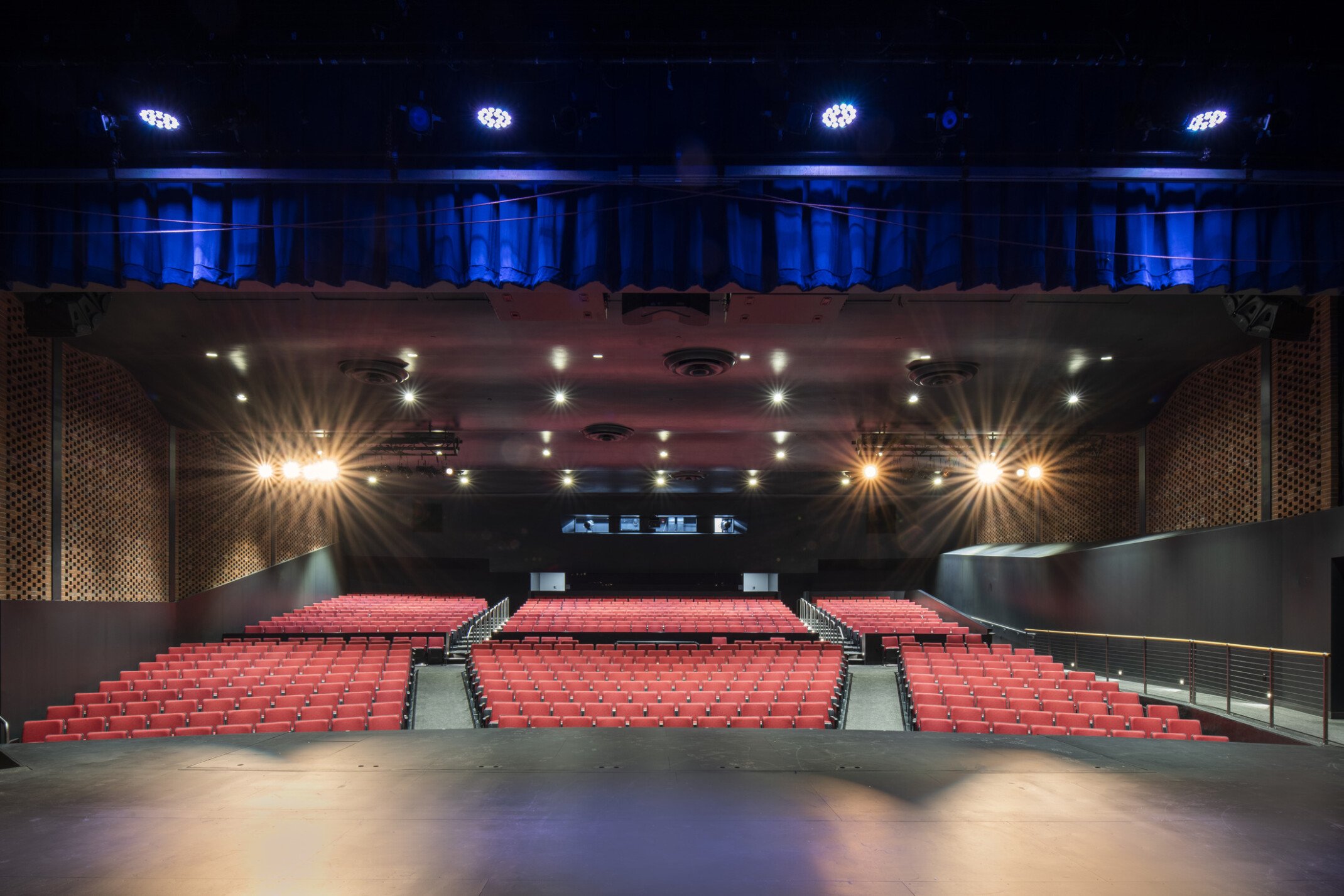Slippery Rock University, a four-year liberal arts institution, offers a nationally recognized dance program; however, the campus lacks adequate performance and rehearsal venues. Our team’s design, in partnership with Renaissance 3 Architects, renovates and expands two existing facilities within the campus’ historic quad, collectively transforming them into a new performing arts center while maintaining the historic feel of the University.
The project negotiates significant regional topography, accommodates new circulation, and elevates the arts on campus. The addition to the 1960s Miller Auditorium creates visual connections between interior and exterior, adding vibrancy to the building and the performing arts program. The design employs arches of varying positioning and scale to break up the addition’s mass and to allow for curated views along the face of the building. The arches reinterpret and pay homage to the traditional archways found across campus. New dance studios above the lobby are offset to optimize visual exposure between the studios, as well as to the lobby and the street. The design also preserves the architectural detail of the East/West Gymnasium, comprising sections from the 19th century and the 1920s, while modernizing the layout of the building for accessibility and current needs.
The 78,340 square foot project encompassed the design of a renovation of Miller Auditorium’s 750-seat theater and additions that include a new scene shop and back-of-house performer spaces to the south and an expanded entry and new lobby to the north. Two new dance studios were added above the lobby. The lobby doubles as a commons space and primary circulation hub, maximizing efficiency by avoiding closed hallways. The project also adapted the East/West Gymnasium to accommodate various dance/theater spaces, including a 300-seat black box, dual-purpose lobby/acting studio, classrooms, storage, restrooms, and costume shops within the East Gym section; a 240-seat dance studio within the West Gym section; dressing rooms and new stair/dancer entrance converted from existing locker rooms; and an additional dance studio (visible from the upper hallway) converted from the existing swimming pool. The black box is conceived as a separate box within the larger shell of the building providing acoustic separation and allowing for actor crossover during performances. A new arrival plaza between buildings connects individual lobby spaces for each performance venue.

